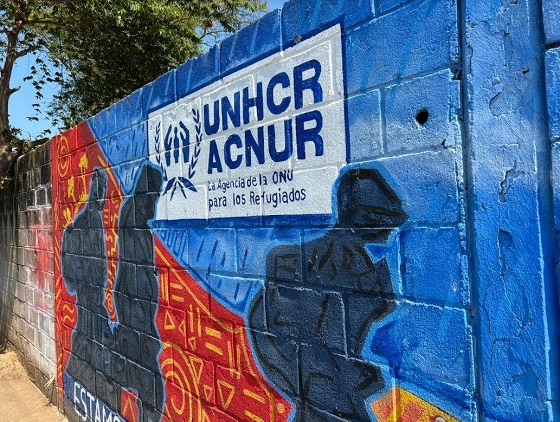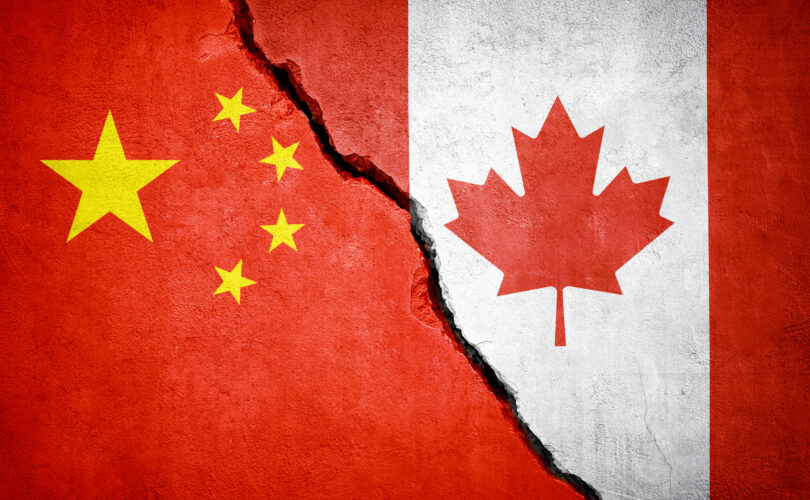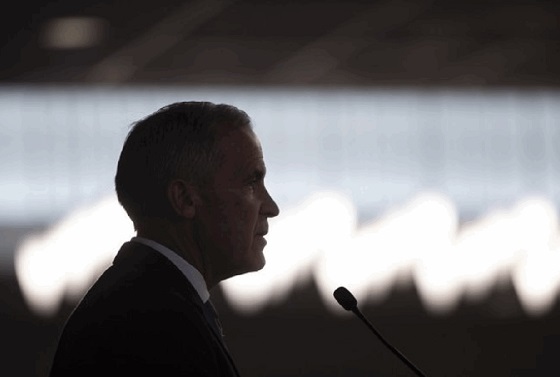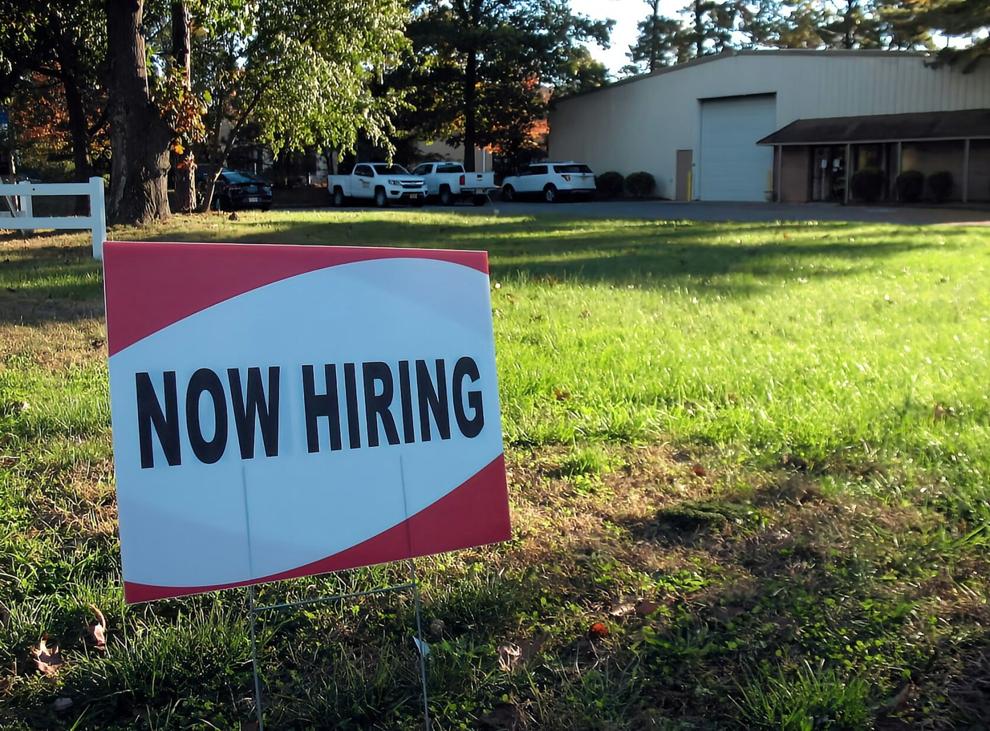espionage
The Latest Biden/Harris ‘Lawful Pathways’ Scheme: Declare Latin American Migrants to Be ‘Refugees’

From the Center For Immigration Studies
By Todd Bensman
Thousands flying in who would not have qualified as refugees in the past
Almost sight unseen and scarcely noticed by the American public, the Biden/Harris administration’s Department of Homeland Security has super-charged yet another “Lawful Pathways” program to admit tens of thousands of people from Latin America who they claim would otherwise have crossed the border illegally.
It’s called the Safe Mobility Office Initiative (SMO), Movilidad Segura in Spanish, jump-started in May 2023 and its capacity expanded this spring. The SMO initiative uses the U.S. refugee resettlement system in a historically atypical way that some critics see as abusive to fly in tens of thousands of people from nationalities the United States has very rarely regarded as warranting refugee resettlement in recent decades — in record numbers and in record-fast time, a CIS examination and analysis of the new program shows.
(See my colleague Nayla Rush’s discussion of the SMO initiative in the context the Biden/Harris administration’s broader remaking of the refugee resettlement program.)
From storefront “offices” set up in Ecuador, Colombia, Costa Rica, and Guatemala, U.S. Citizenship and Immigration Services (USCIS) personnel and United Nations proxies have granted refugee status to at least 21,000 people from seven Latin America countries in the first year of the program, as of May 2024, some half of them having already arrived, a White House fact sheet reports. (Canada and Spain also take part in the SMO initiative, and several thousand additional people were approved for resettlement in those countries.) The newly minted refugees were Haitians, Venezuelans, Nicaraguans, Cubans, Guatemalans, Ecuadorians, and Colombians. Data not yet in will likely show greater numbers through June and July because, in May, the Biden administration expanded the SMO program to add Hondurans and Salvadorans for a total of nine nations whose citizens can now be considered for U.S. refugee status.
Historically, the U.S. bestows the highly desired refugee status on grounds that recipients credibly claim they cannot return home due to a “well-founded fear” of persecution on the basis of race, religion, nationality, political opinion, or membership in a particular social group, according to USCIS, whose personnel are staffing the SMO foreign offices in partnership with the United Nations High Commissioner for Refugees (UNHCR) and other UN agencies.
The offer of refugee resettlement brings with it an interest- and penalty-free flight loan backed by U.S. taxpayers, followed by a broad assortment of U.S. resettlement aid and welfare benefits, and a quick path to permanent residence and U.S. citizenship, all very difficult to legally reverse.
A March 2024 Mixed Migration Centre survey of SMO users shows the vast majority, 90 percent, want to travel to the United States for economic opportunities and better living standards rather than to flee war or persecution.
The 21,000 approved for resettlement as of May are a harbinger of even greater number of “refugee” classifications of essentially economic immigrants in Latin America. Tens of thousands more were in the pipeline to fill the administration’s historically high refugee allocation for the Latin America region, from less than 5,000 to an unprecedented 50,000 in 2024. More than 190,000 had registered for those 50,000 slots by the end of May, although many may be declined and referred by the SMO offices to other “lawful pathways”, such as family reunification visas, labor programs, or the legally dubious parole programs.
“Working closely with international organization partners, we are building capacity, running extensive messaging campaigns, and exponentially increasing the number of people who receive information or services via the SMOs,” Marta Youth, the principal deputy assistant secretary for the State Department’s Bureau of Population, Refugee and Migration testified before a congressional committee in March: “In the refugee pathway, we aim to resettle between 35,000 and 50,000 individuals in Fiscal Year 2024, an historic and ambitious goal that would amount to an increase in refugee resettlement from the Western Hemisphere of over 450 percent from last year.”
This sharp departure from traditional operation of the U.S. Refugee Admissions Program (USRAP) — essentially handing out of refugee approvals to those usually regarded as economic migrants looking to work in the U.S. — is explained by the administration’s public justification: to divert the recipients from planned travel on dangerous migrant trails en route to illegal U.S. Southwest border crossings from Mexico.
That rationale for the expansion of “refugee” resettlement from Latin America comes in an election year in which a mass illegal immigration border crisis figures as a top problem among voters.
“The Safe Mobility initiative is one of the many ways the United States is facilitating access to safe and lawful pathways from partner countries in the region at no cost, so refugees and vulnerable migrants don’t have to undertake dangerous journeys in search of safety and better opportunities,” one State Department release explained last year.
The administration’s justifications for its newfound generosity of refugee status handouts strikes some familiar with USRAP as one of several deviations from operational norms, for short-term political purposes, indicating misuse or even abuse.
Elizabeth Jacobs, a former USCIS attorney and now the Center for Immigration Studies’ director of regulatory affairs and policy, told me the Biden administration’s goal is to serve the short-term political purpose of reducing the appearance of border congestion in an election year. That comes at a steep price, she said.
“This new program is consistent with the Biden administration’s overall strategy to obscure the border crisis from the American public, but not actually reduce the entries of inadmissible aliens to the United States,” Jacobs said. “There are winners and losers to nearly all immigration policies. The losers, here, are the aliens abroad who meet the statutory criteria for refugee status and are in actual need of resettlement.”
One of a Trio of Programs Enabling Invisible Immigration
The Safe Mobility Offices program is actually the third initiative in a broader Biden administration policy strategy of addressing the bad publicity caused by mass illegal border crossings that surpassed nine million in just the first three years of the Biden administration.
The SMO works in concert with two other major “lawful pathways” programs that, between the pair, have paroled into the country on “humanitarian” protection grounds more than one million inadmissible economic immigrants since 2022 who otherwise would supposedly have staged the politically problematic illegal border crossings the administration now wants to reduce.
One of those programs has admitted more than 500,000 inadmissible aliens from 100 countries on two-year renewable but legally challenged “humanitarian parole” permits granted through the “CBP One” mobile phone app. These hundreds of thousands were admitted into the United States at eight U.S.-Mexico land border ports of entry. (See: “New Records Unveil Surprising Scope of Secretive ‘CBP One’ Entry Scheme”.)
The other humanitarian parole program has rechanneled from presumed border crossings another half-million inadmissible aliens by pre-authorizing mostly Cubans, Haitians, Nicaraguans, and Venezuelans to fly commercial from 77 countries into 45 international U.S. airports, ostensibly as humanitarian rescues. (See “New Data: Many Migrants in Biden’s ‘Humanitarian’ Flights Scheme Coming in from Safe Countries and Vacation Wonderlands”.)
At least 75,000 per month are still entering through just these two ad hoc, congressionally unauthorized, and politically controversial admission programs.
Those two cousin programs have drawn some controversy, opposition, and calls by Republican presidential nominee Donald Trump to end at least the flights program after the Center for Immigration Studies forced the Biden administration to reveal details through a Freedom of Information Act lawsuit.
But the SMO program is far less known and, probably as a result, has yet to draw similar critiques. Those rejected for refugee status might well be referred to the land and air parole programs.
Nayla Rush, senior researcher for the Center and its refugee policy expert, told me current approvals for refugee status warrant questioning as to whether recipients are eligible.
“They want to bring people from Central America as refugees to decrease illegal entry when we are supposed to be bringing people in who are the most vulnerable,” Rush said. “Are we admitting the most vulnerable, those in real need of resettlement, or is it another policy or diplomatic move undertaken by the Biden administration to address the ‘root causes’ of immigration in the region?”
Deviations from the Norm
Historically, the U.S. State Department and USCIS have reserved refugee resettlement mainly for those fleeing active war zones or violent political upheavals in home countries.
Top nationalities over the two decades have featured people from war-torn Afghanistan, the Democratic Republic of Congo (DRC), Iraq, Bhutan, Syria, Somalia, and some republics of the former Soviet Union, according to published government data. In the last 10 years, Burma, DRC, and Iraq were the nationalities most often granted refugee status.
By contrast, refugee grants in Latin America have long been scant or even nonexistent for decades right up until this year.
From 2002 to 2022, for example, the U.S. has granted refugee status to comparatively tiny numbers of Haitians (49), Nicaraguans (7), Venezuelans (183), Colombians (3,638), and Guatemalans (1,322), albeit sometimes more to Cubans (46,600, due to unique diplomatic considerations).
Most are already safely resettled in third nations, such as Haitians in Chile and Brazil, and were long regarded as not warranting special U.S. protection. Only four Haitians, for instance, were granted refugee status between 2012 and 2022. The U.S. granted only 173 Venezuelans refugee status during that time, few even in the years following that country’s 2017 economic collapse that sent more than seven million of them into 15 nearby countries.
Now, a seemingly great urgency powers approvals of Venezuelans in unprecedented numbers and in record time.
Most SMO applicants are Venezuelans who have been living for years safely and often prosperously in Colombia and Ecuador, hardly refugee material. (See Video: “U.S. Enabling Mass Asylum and Humanitarian Permit Fraud”).
UNHCR screens them all and makes referrals to USCIS adjudicators in the SMO storefronts. On average, the offices were processing some 8,000 cases monthly, including 3,000 at just one local SMO office in Bogota, Colombia, according to a University of Wisconsin policy brief titled “Year One of Safe Mobility Offices in Colombia”.
Of the 3,000 a month whom UNHCR refers to the local SMO office in Colombia, the U.S. government approves 95 percent for refugee resettlement, the university’s brief reported.
Many tens of thousands are Guatemalans and Nicaraguans, who have not suffered war in decades, are registering, too.
A State Department spokesman told CBS News in late May that Safe Mobility Offices in mid-May had “enabled a six-fold increase in the number of refugees resettled from the Western Hemisphere”. In the first half of FY2024, October 2023 through March 2024, more refugees from Latin America and the Caribbean were admitted (8,518) than in any previous full year.
In addition to the oddity of bestowing refugee status on those long regarded as ineligible economic migrants is the speed at which U.S. authorities are processing them. This is perhaps the fastest refugee processing in program history.
“In Just Nine Days!” Breaking Speed Records? Approvals for refugee resettlement, which include security vetting and needs assessments, often took an average of between 18-24 months or even longer. USRAP had already been using technology to reduce processing time for many to as short as six months, Nayla Rush has reported.
But the boasted “expedited” process for Latin Americans seems to be breaking all records.
“USCIS in Colombia processes refugee resettlement applications in only 9 days!” boasts a sub headline in the University of Wisconsin’s policy brief about the first year of SMO. Final arrangements for transportation afterward may require another month or two.
In Colombia and elsewhere where SMO offices are operating, the Associated Press has reported, traditional refugee screening has gone from a “yearslong effort” to “only months”.
“These refugee applicants undergo the same rigorous and multi-layered interagency screening and vetting process as all other refugees and, if eligible, most will arrive in the United States in just a matter of months,” the State Department’s Marta Youth testified.
Free Taxpayer-Backed Airfare?
The previously off-limits U.S. refugee status is especially appealing to Latin Americans because, in addition to providing beneficiaries with a bonanza of U.S. resettlement assistance and a path to U.S. citizenship, the State Department offers interest-free “travel loans” for airline tickets that can exceed $10,000 for families. There is no penalty for failure to pay.
The “loan” program was first set up in the 1950s to help people escape Eastern European Communist countries and is used to help refugees travel in from all over the world. Today, the UN’s International Organization for Migration administers the money on behalf of the State Department, and non-governmental resettlement agencies collect the payments, for commissions of up to 25 percent, according to the New York Times and other reports.
But repayment and loan default rates remain a public mystery, as the State Department under several past administrations has never willingly published this information. In response to litigation by Judicial Watch seeking the default and repayment information for 2016-2017, the State Department asserted that it did not track the information. At the time, Judicial Watch cited a private review of records provided by a whistleblower showing that from 1952 to 2002, IOM issued $1,020,803,910 in loans and had recovered only about half of it.
Under the Biden administration, the State Department has continued its resistance to releasing the information. It has ignored a Center for Immigration Studies Freedom of Information Act request for default rates and a 2022 information request by a dozen Republican members of Congress led by Rep. Lance Gooden (R-Texas).
The Immediate Future
The future of these programs hangs in the balance of the upcoming presidential election. Donald Trump, the Republican nominee, has promised to reverse all of Biden’s border-related immigration policies, and this one would likely not escape the Republican’s hatchet. While a Trump administration likely cannot legally reverse refugee grants, it can quickly return USRAP to its prior norm of focusing on higher-priority populations suffering actual war and persecution in their homelands.
But should another Democrat win office, such as Vice President Kamala Harris, expect further expansion of the refugee program in Latin America, as well as the other two humanitarian parole programs. I expect further increases in the Latin America refugee allocation beyond 50,000 to meet the far greater demand for its benefits, as well as more SMO offices in both existing countries and new ones in Latin America. And skyrocketing taxpayer burdens for all of it, on both sides of the American border.
The author would like to thank Eric Gordy for his research assistance.
espionage
Carney Floor Crossing Raises Counterintelligence Questions aimed at China, Former Senior Mountie Argues

Michael Ma has recently attended events with Chinese consulate officials, leaders of a group called CTCCO, and the Toronto “Hongmen,” where diaspora community leaders and Chinese diplomats advocated Beijing’s push to subordinate Taiwan. These same entities have also appeared alongside Canadian politicians at a “Nanjing” memorial in Toronto.
By Garry Clement
Michael Ma’s meeting with consulate-linked officials proves no wrongdoing—but, Garry Clement writes, the timing and optics highlight vulnerabilities Canada still refuses to treat as a security issue.
I spent years in the Royal Canadian Mounted Police learning a simple rule. You assess risk based on capability, intent, and opportunity — not on hope or assumptions. When those three factors align, ignoring them is negligence.
That framework applies directly to Canada’s relationship with the People’s Republic of China — and to recent political events that deserve far more scrutiny than they have received.
Michael Ma’s crossover to the Liberal Party may be completely legitimate, although numerous observers have noted oddities in the timing, messaging, and execution surrounding Ma’s move, which brings Mark Carney within one seat of majority rule.
There is no evidence of wrongdoing.
But from a law enforcement and national security perspective, that is beside the point. Counterintelligence is not about proving guilt after the fact; it is about identifying vulnerabilities before damage is done — and about recognizing when a situation creates avoidable exposure in a known threat environment.
A constellation of ties and public appearances — reported by The Bureau and the National Post — has fueled questions about Ma’s China-facing judgment and vetting. Those reports describe his engagement with a Chinese-Canadian Conservative network that intervened in party leadership politics by urging Erin O’Toole to resign for his “anti-China” stance after 2021 and later calling for Pierre Poilievre’s ouster — while advancing Beijing-aligned framing on key Canada–China disputes.
The National Post has also reported that critics point to Ma’s pro-Beijing community endorsement during his campaign, and his appearance at a Toronto dinner for the Chinese Freemasons — where consular officials used the forum to promote Beijing’s “reunification” agenda for Taiwan. Ma reportedly offered greetings and praised the organization, but did not indicate support for annexation.
Open-source records also show that the same Toronto Chinese Freemasons and leaders Ma has met from a group called CTCCO sponsored and supported Ontario’s “Nanjing Massacre Commemorative Day” initiative (Bill 79) — a campaign celebrated in Chinese state and Party-aligned media, alongside public praise from PRC consular officials in Canada.
China Daily reported in 2018 that the Nanjing memorial was jointly sponsored by CTCCO and the Chinese Freemasons of Canada (Toronto), supported by more than $180,000 in community donations.
Photos show that PRC consular officials and Toronto politicians appeared at related Nanjing memorial ceremonies, including Zhao Wei, the alleged undercover Chinese intelligence agent later expelled from Canada after The Globe and Mail exposed Zhao’s alleged targeting of Conservative MP Michael Chong and his family in Hong Kong.
The fact that Michael Ma recently met with some of the controversial pro-Beijing community figures and organizations described above — including leaders from the Hongmen ecosystem and the CTCCO — does not prove any nefarious intent in either his Conservative candidacy or his decision to cross the floor to Mark Carney.
But it does demonstrate something Ottawa keeps avoiding: the PRC’s influence work is often conducted in plain sight, through community-facing institutions, elite access, and “normal” relationship networks — the very channels that create leverage, deniability, and political pressure over time.
Canada’s intelligence community has been clear.
The Canadian Security Intelligence Service has repeatedly identified the People’s Republic of China as the most active and persistent foreign interference threat facing Canada. These warnings are not abstract. They are rooted in investigations, human intelligence, and allied reporting shared across the Five Eyes intelligence alliance.
At the center of Beijing’s approach is the United Front Work Department — a Chinese Communist Party entity tasked with influencing foreign political systems, cultivating elites, and shaping narratives abroad. In policing terms, it functions as an influence and access network: operating legally where possible, covertly where necessary, and always in service of the Party’s strategic objectives.
What differentiates the People’s Republic of China from most foreign actors is legal compulsion.
Under China’s National Intelligence Law, Chinese citizens and organizations can be compelled to support state intelligence work and to keep that cooperation secret. In practical terms, that creates an inherent vulnerability for democratic societies: coercive leverage — applied through family, travel, business interests, community pressure, and fear.
This does not mean Chinese-Canadians are suspect.
Quite the opposite — many are targets of intimidation themselves. But it does mean the Chinese Communist Party has a mechanism to exert pressure in ways democratic states do not. Ignoring that fact is not tolerance; it is a failure to understand the threat environment.
In the RCMP, we were trained to recognize that foreign interference rarely announces itself. It operates through relationships, access, favors, timing, and silence. It does not require ideological agreement — only opportunity and leverage.
That is why transparency matters. When political figures engage with representatives of an authoritarian state known for interference operations, the burden is not on the public to “prove” concern is justified. The burden is on officials to explain why there is none — and to demonstrate that basic safeguards are in place.
Canada’s allies have already internalized this reality. Australia, the United States, and the United Kingdom have all publicly acknowledged and legislated against People’s Republic of China political interference. Their assessments mirror ours. Their conclusions are the same.
In the United States, the Linda Sun case — covered by The Bureau — illustrates, in the U.S. government’s telling, how United Front–style influence can be both deniable and effective: built through diaspora-facing proxies, insider access, and relationship networks that rarely look like classic espionage until the damage is done.
And this is not a niche concern.
Think tanks in both the United States and Canada — as well as allied research communities in the United Kingdom and Europe — have documented the scale and persistence of these political-influence ecosystems. Nicholas Eftimiades, an associate professor at Penn State and a former senior National Security Agency analyst, has estimated multiple hundreds of such entities are active in the United States. How many operate in Canada is the question Ottawa still refuses to treat with urgency — and, if an upcoming U.S. report is any indication, the answer may be staggering.
Canada’s hesitation to address United Front networks is not due to lack of information. It is due to lack of resolve.
From a law enforcement perspective, this is troubling. You do not wait for a successful compromise before tightening security. You act when the indicators are present — especially when your own intelligence agencies are sounding the alarm.
National security is not ideological. It is practical.
The Bureau is a reader-supported publication.
To receive new posts and support my work, consider becoming a free or paid subscriber.
Artificial Intelligence
UK Police Pilot AI System to Track “Suspicious” Driver Journeys
AI-driven surveillance is shifting from spotting suspects to mapping ordinary life, turning everyday travel into a stream of behavioral data
|
|
-

 International20 hours ago
International20 hours agoOttawa is still dodging the China interference threat
-

 Business18 hours ago
Business18 hours agoThere’s No Bias at CBC News, You Say? Well, OK…
-

 Automotive17 hours ago
Automotive17 hours agoCanada’s EV gamble is starting to backfire
-

 International19 hours ago
International19 hours ago2025: The Year The Narrative Changed
-

 Fraser Institute2 days ago
Fraser Institute2 days agoCarney government sowing seeds for corruption in Ottawa
-

 Business1 day ago
Business1 day agoResidents in economically free states reap the rewards
-

 Alberta2 days ago
Alberta2 days agoAlberta Next Panel calls for less Ottawa—and it could pay off
-

 Daily Caller2 days ago
Daily Caller2 days agoWhile Western Nations Cling to Energy Transition, Pragmatic Nations Produce Energy and Wealth







